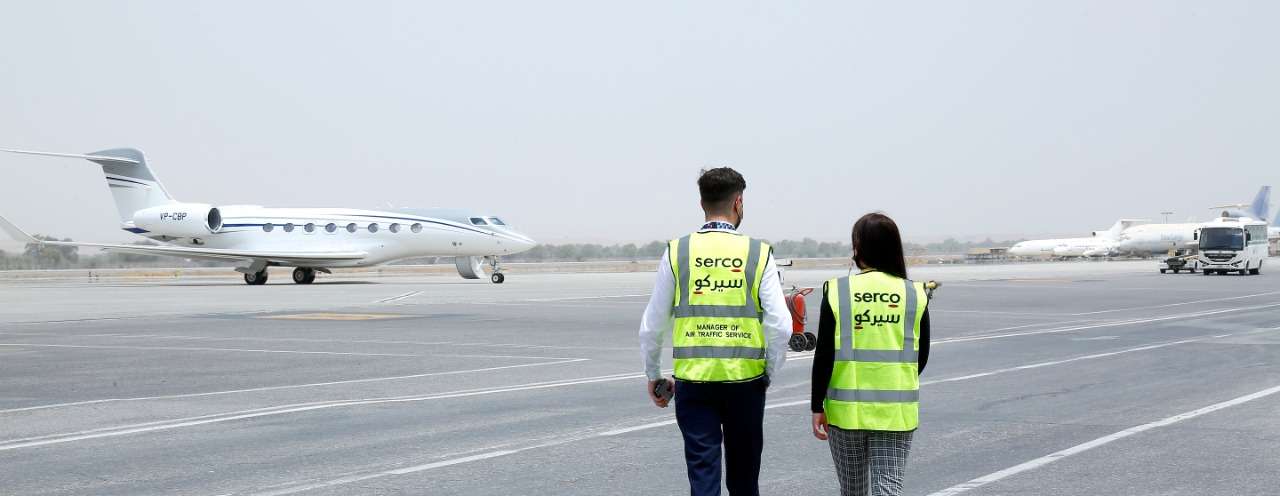
Samantha Rowles – Operations Director of Transportation, Serco Middle East
With the recent announcement that Abu Dhabi Airports has revealed its new corporate identity ‘which has been guided by an aspirational purpose to shape the future of airport experiences’, it is a reinforcement of the premise that so much has evolved in the air travel sector in recent years. With the impact of COVID-19, we can see that the airport sector in particular, has embraced a whole new set of values and approach to customer experience, which many leading airports across the world are now grasping as they look to reshape and enhance the experience for air travellers.
With COVID-19 came many new procedures that changed the way passengers fundamentally approached travel, much of what we took for granted had now changed. Travellers were now being encouraged to arrive at airports a full three hours ahead of their scheduled departure flights in order to complete the necessary pre-flight safety requirements. Yet despite the fact much has improved since the onset of the global vaccination programme, and as many people return to some normality, it is clear that consumer behaviour around the world has changed with new attitudes and values emerging as a result.
These changes in attitudes are leading to an evolution of behaviour whereby passengers are continuing to arrive at airports a full three hours ahead of their journey, even despite the relaxation of all most all the pre-flight COVID-19 procedures.
What we are seeing at Dubai Airport, where we are contracted to provide various support services, is that passengers now have considerably more time to experience the high level of experiential services available, whether it be health and wellbeing in the form of spa treatments, retail therapy in the variety of shops available, or just enjoying the many food and beverage outlets in a more embracive way. This is rather than rushing through the airport as quickly as possible, whilst grabbing a bite to eat and doing some quick duty-free shopping.
What this means is that passengers who are now more attuned to arrive earlier at airports in order to mitigate any unforeseen delays, combined with the implementation of an array of user-friendly technologies, such as smart gates and self check-in, is that travellers are seeking to experience airports like never before.
With the number of commuters and travellers now steadily increasing throughout 2022, delivering a fantastic customer service where people feel safe and comfortable is paramount.
Providing excellent customer experience is not a new thing to a country such as the UAE, or cities such as Dubai and Abu Dhabi. Customer experience excellence is considered a major contributor to the success of the tourism sector here.
While safety is at the top of the operators’ priority list, the journey through the airport is considered another vital indicator of how well a facility is managed and therefore an intrinsic part of the customer experience. Many passengers worry mostly about flight statuses and changes in safety rules and regulations.
It’s the operator’s job to ensure that the customers are always well informed and up to date with any changes, and this can only be achieved by providing clear directions throughout the facility and ensuring that we have well-trained, well connected, and well-informed staff that are able to assist passengers and guide them through their journey, like our guest ambassadors in place at Dubai Airports.
It is critical to ensure that all passengers are informed and have visibility on the status of their connecting flights and are aware of public transportation availabilities and schedules.
It is important when planning the airport experience to look at all the details and put ourselves in the passenger’s shoes to ensure we are not missing on the big details, as well as the small ones.
From adding direction signs within the physical space, to making sure that the on-ground staff is informed and up to date, it’s crucial to the whole experience to be able to provide customers with full support, from the minute they enter the facility, to the minute they exit it.
Relying on technology
With airports getting busier, there should be no compromising when it comes to implementing and utilising frictionless technologies and systems such as artificial intelligence (AI) and machine learning to create the ultimate customer experience.
Technology such as facial recognition and customer happiness surveys at check-in counters are used to gather data from passengers which can help make the customer experience better and more personalised. Even more exciting is that the way data can be used to predict customer behaviour over long periods of time is becoming far more sophisticated, allowing service providers to collect better insights and deliver better services accordingly.
Understanding and providing an exceptional airport experience is not a simple task. It’s a task that requires every player and every member in the airport ecosystem to collectively work towards the main goal of deeply and properly understanding what travellers want in order to deliver an optimised experience. This is why airports should consider total airport management, which means outsourcing the airport’s full operations to one provider, who will be able to operate all services within the airport and deliver a seamless passenger journey.
Total Airport Management
Understanding and providing an exceptional airport experience is not a simple task. It’s a task that requires every player and every member in the airport ecosystem to collectively work towards the main goal of deeply and properly understanding what travellers want in order to deliver an optimised experience. This is why airports should consider total airport management, which means outsourcing the airport’s full operations to one provider, who will be able to operate all services within the airport and deliver a seamless passenger journey.
When one service provider handles full airport operations, this means that all information and data is always available to all teams, making the communication process easier and faster, allowing all on-grounds teams to provide their best expertise to all commuters.

Leave a Reply